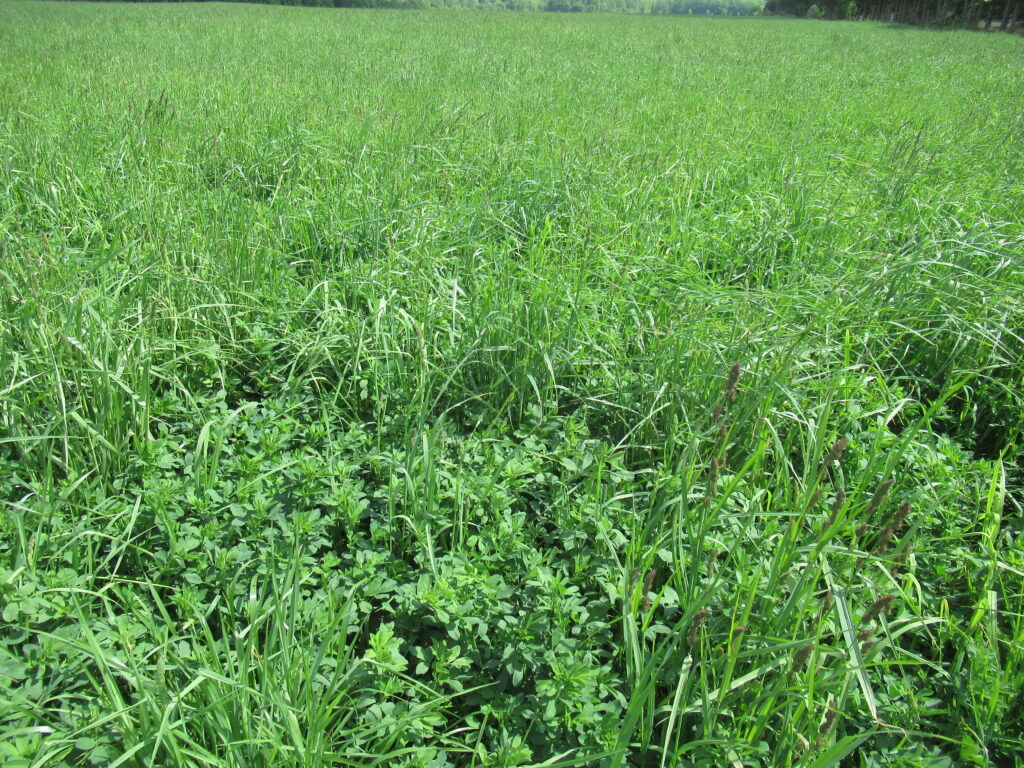Conditions
While power has been restored to most areas that lost it as a result of the storm, cleanup and assessment continues in some places. It was intense wind (tornado or not) that caused the most damage. Most of our region was affected in some way, but the worst impacts are localized in concentrated areas that were hardest hit.
Rainfall from the storm itself was minimal overall, but consistent rains last week made further planting and spraying progress slow down considerably.

Cereals
Flag leaves have emerged in many winter wheat fields, which continue to look strong apart from a few unlucky fields that suffered leaf damage from the storm (wind and hail). No lodging was reported in wheat. Leaf damage can make it difficult to stage the crop correctly for fungicide timing. A T2 fungicide can help protect the flag leaf if it’s applied when that leaf is fully emerged. Strobilurin, or “strobi” fungicides (those with “strobin” in the chemical name – e.g., Strobe, Headline) are recommended in case of leaf damage as they can reduce ethylene production, potentially reducing the amount of cell death in damaged tissue. For T3 fungicides, the ideal timing is 3-4 days after “Day 0”, when 75% of heads have fully cleared the flag leaf ligule. Applications up to Day 8 have still shown significant reduction in DON but it less than from optimal timing. Do not use strobilurin fungicides at heading (T3), as they have been shown to increase grain DON levels.
Spring cereals are entering the tillering stage. Weed control is ongoing but challenged by wet soils and conflicting field work priorities. Growers considering PGR applications should plan to time those for GS 30-32. The value of PGR applications depends on lodging risk, which depends in part on the variety. Check the Ontario Cereal Crop Committee website for variety lodging risk ratings, or to compare specific varieties.
Forage and Pastures
Alfalfa development is variable across the region. Some will be starting first cut by the weekend, while other stands are still two weeks away from harvest. In mixed stands, orchardgrass is heading out. Stands with higher grass content should be cut sooner to maintain optimal feed quality.

Many fields being cut early will be rotated into corn or soybeans where the alfalfa has declined. New forage seedings are still going in, and many are under-seeded to a cereal to maintain forage yields during the establishment year. While there is no seeding deadline for Agricorp (though spring seeded acres must be reported by June 30), dry conditions after seeding can create competition for water between the cereal and the perennial forage. Since cereals are better competitors, this can result in a thinner or less vigorous forage stand after cereal silage harvest.
Forage rye harvest has started. Yields seem promising, but timing is important to maintain quality as rye exits the vegetative stage.
Corn
Planting progress slowed last week due to rain. Corn acres are about 90% planted and heavier soils continue to be slow to dry.
Early planted corn is at 3-leaf stage. A few fields suffered leaf damage and are hard to stage. The fitness of planting conditions will start to become more visible after V3 as the nodal root system takes over, but for now most stands look good.
Soybeans
Around 60-80% of soybean acres have been planted overall, but some areas with high-clay soils that have remained wet still only have about a third of acres planted. Planting progress will likely continue to be slow until the weather improves next week.
At least one field of early planted soybeans will need to be replanted due to storm damage.
Weed Control
Again, soil moisture and the forecast are making it difficult to complete spraying operations. In the rush of planting a few weeks ago, some planned pre-emergence soil-applied herbicides were not applied. This is a problem especially in IP soybeans where there aren’t many good post-emergence options.
Historically, timing post-emergent herbicides at around 21 days after soybean planting has provided the best control throughout the critical weed-free period (1st to 3rd trifoliate stage). However, weed emergence patterns vary considerably from field to field. Therefore, it is best to scout for weed emergence at 10-14 days after planting and be ready to spray before weeds get beyond the optimal stage for control (4-6 leaves). Herbicide-resistant Canada fleabane and waterhemp can be easy to miss. See Waterhemp: biology and control on fieldcropnews.com or the Crop Protection Hub for information on controlling these weeds.
Agricorp Deadlines
June 15 – Report unseeded acres
June 30 – Report final acreage
Other
The Ontario CCA Association is hosting a tour of 5 locations in Eastern Ontario on August 16-17. More information can be found in the Payments tab on their website.
